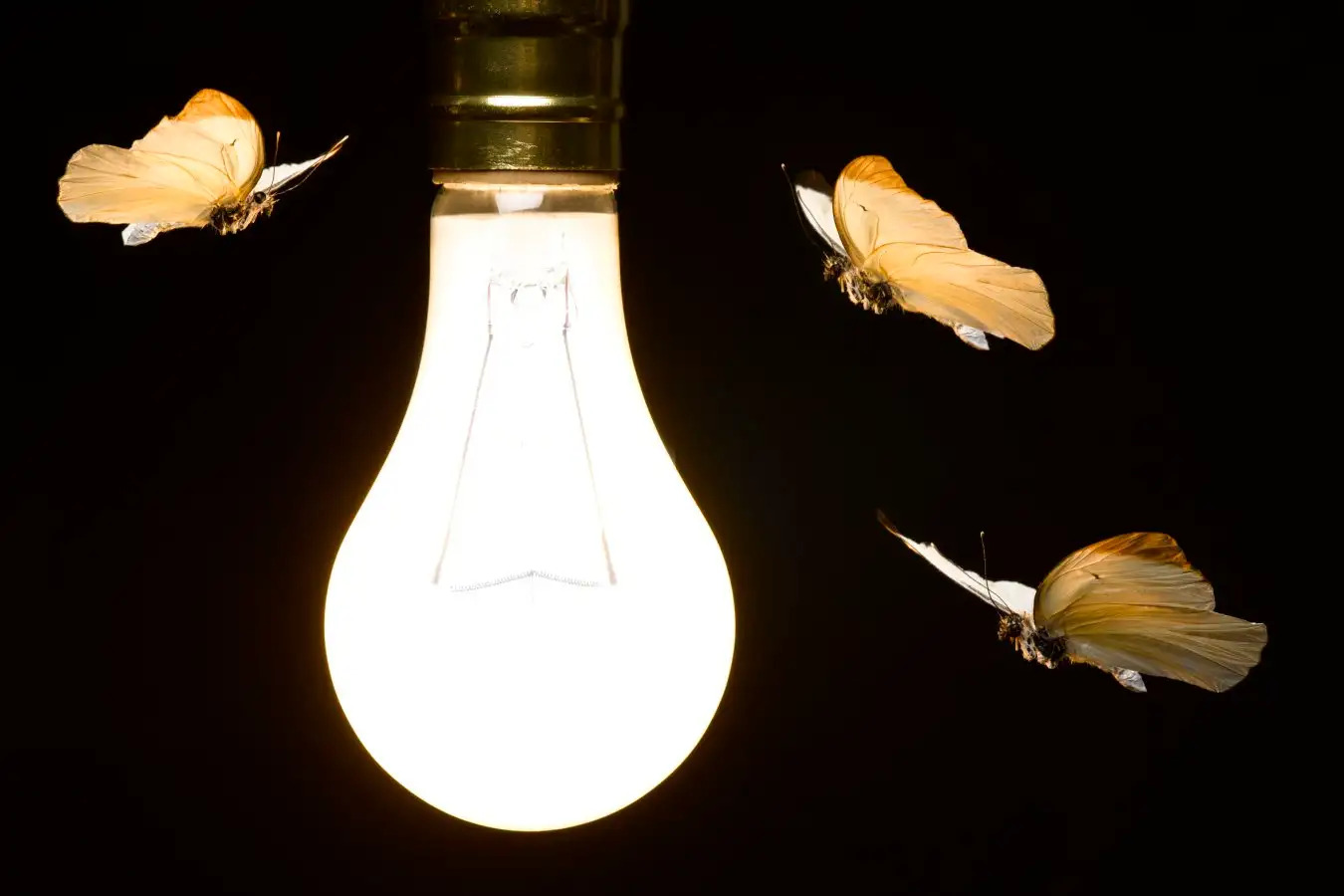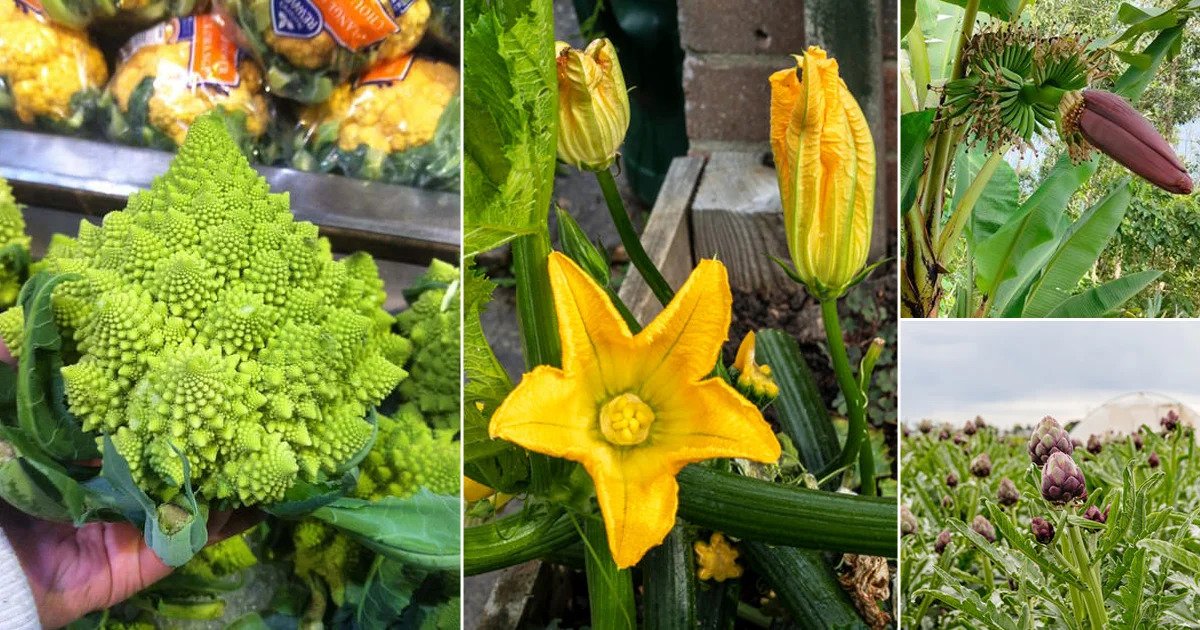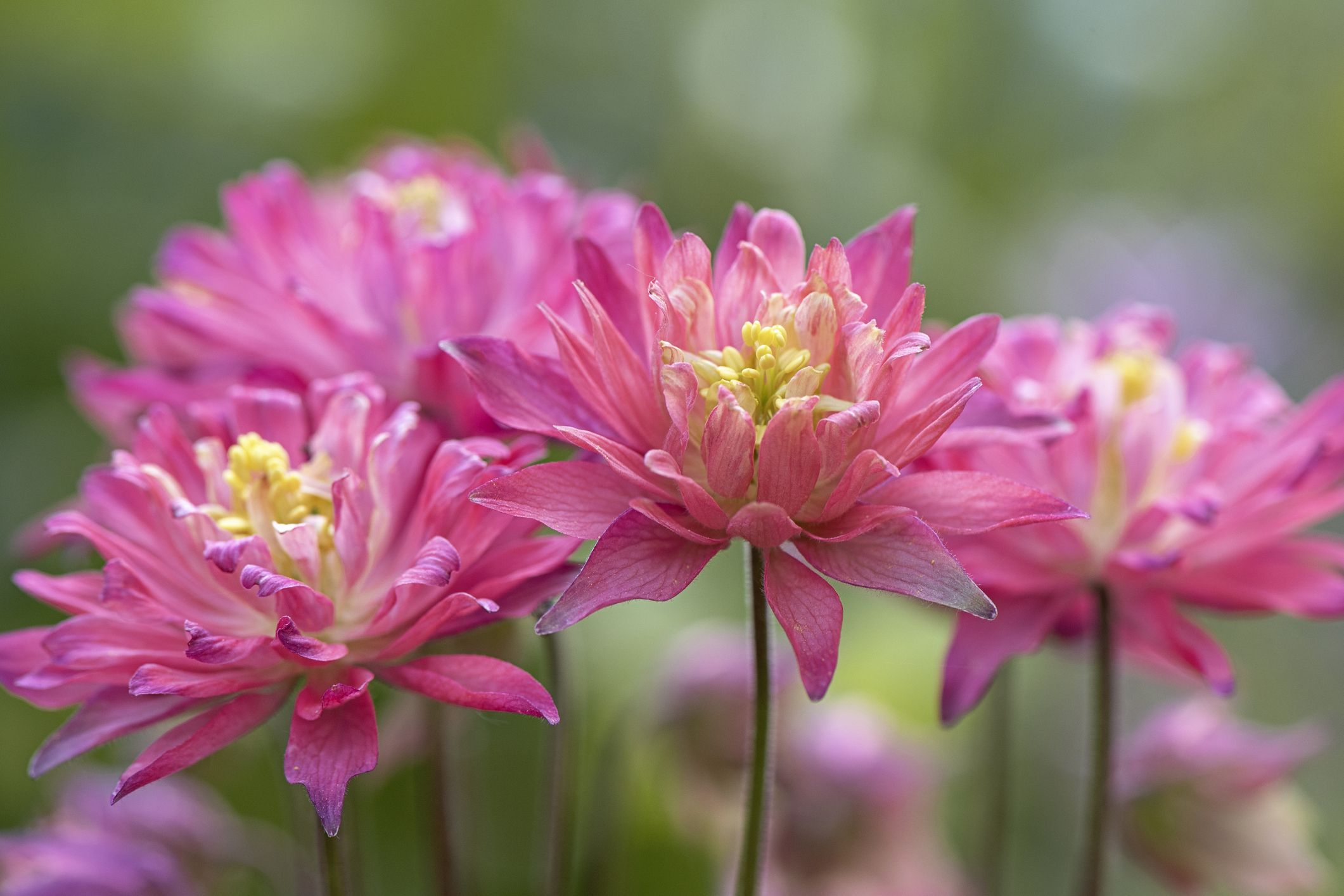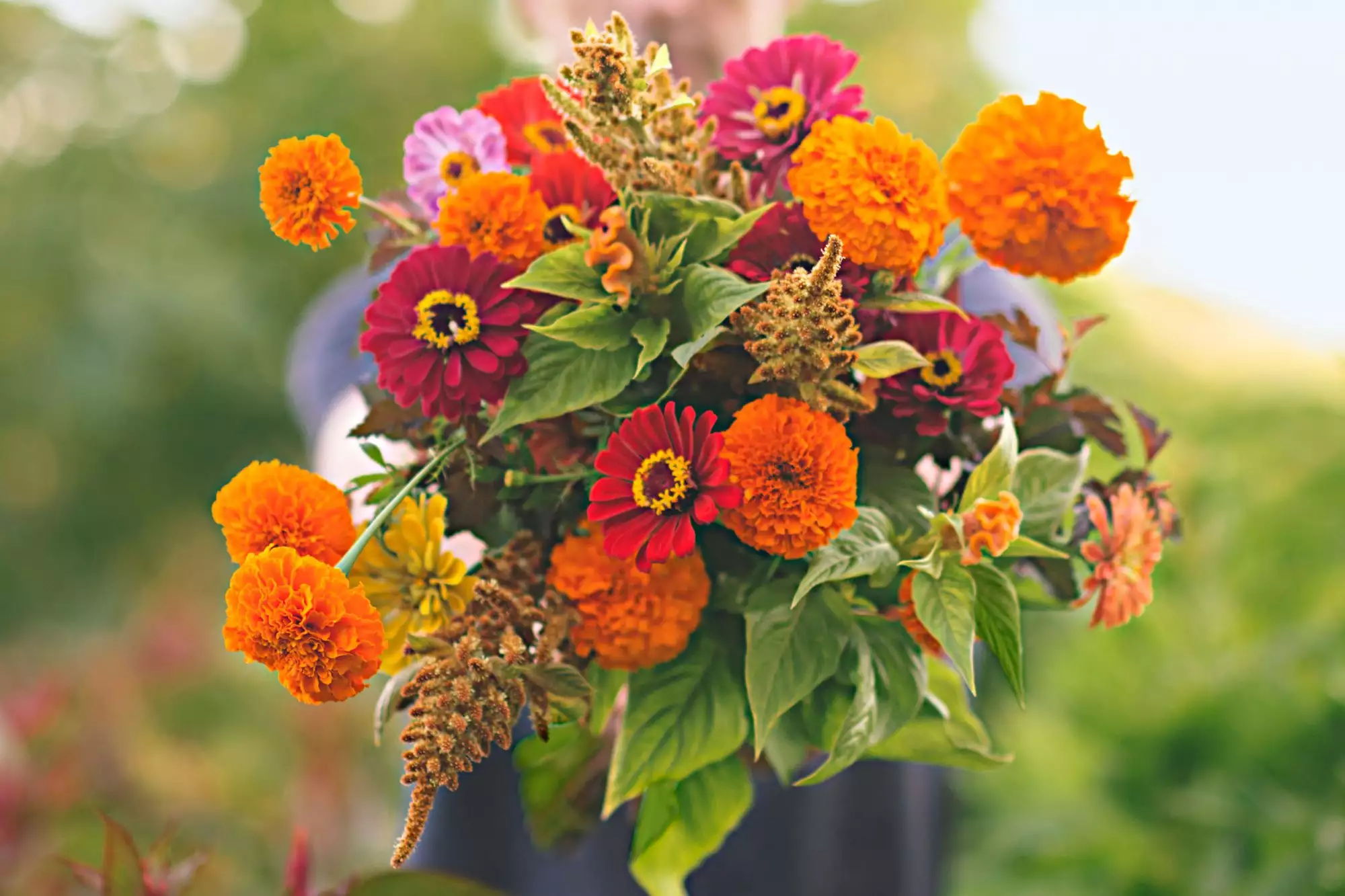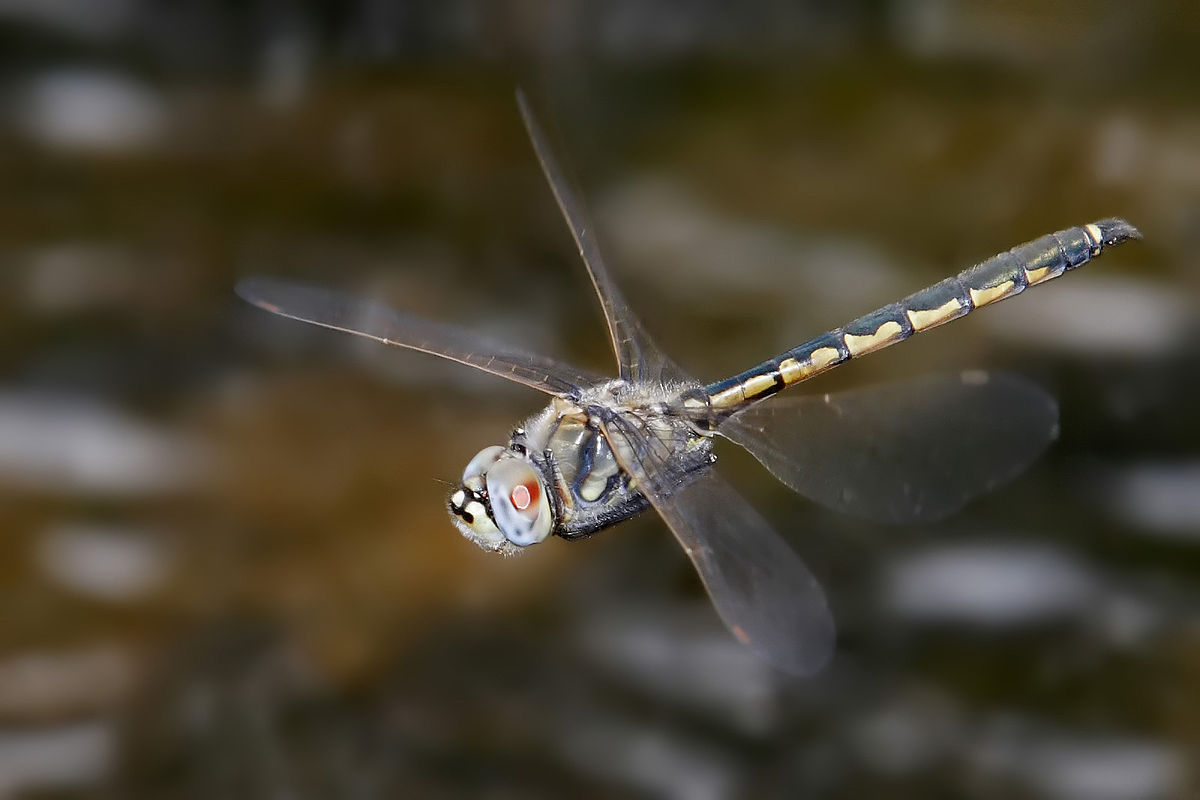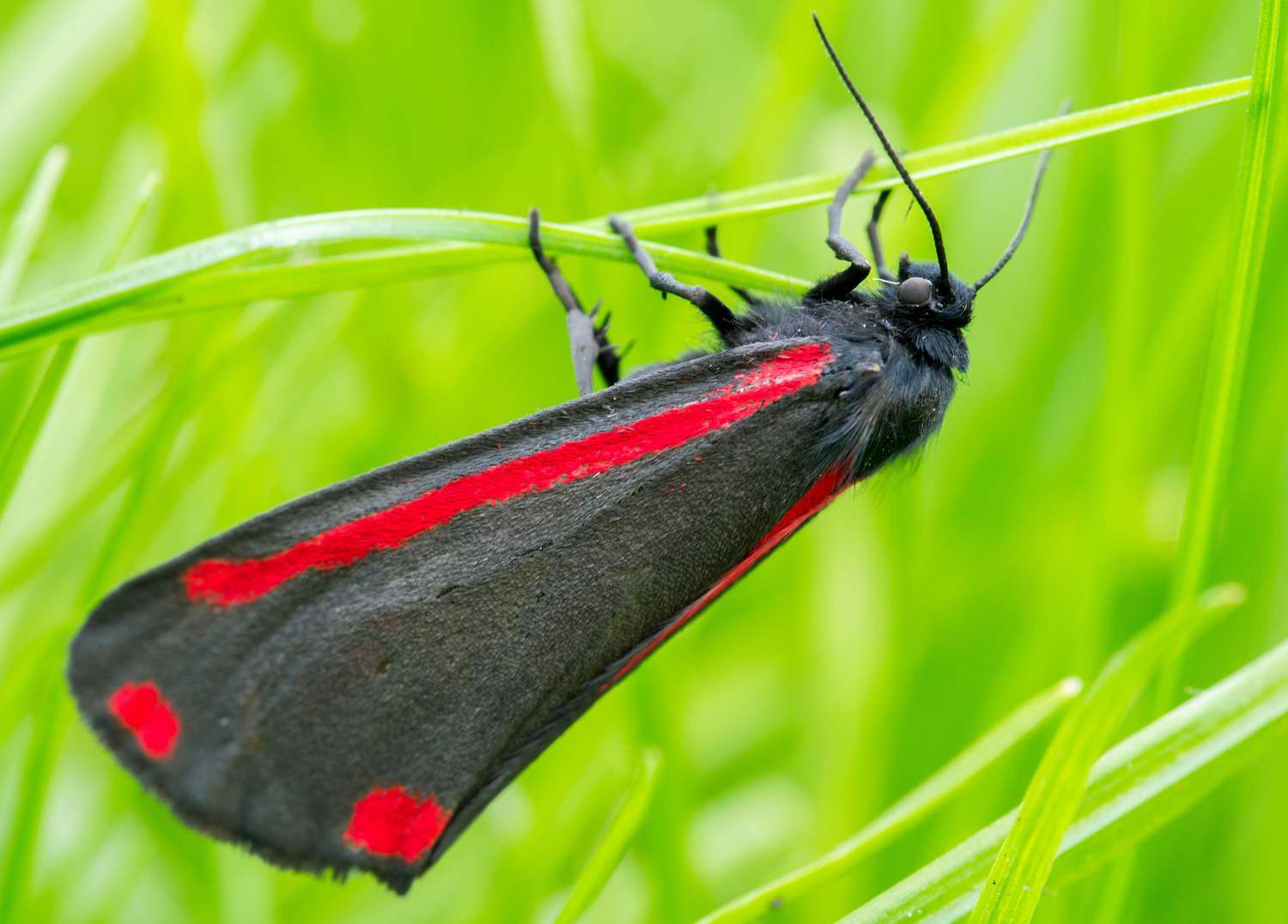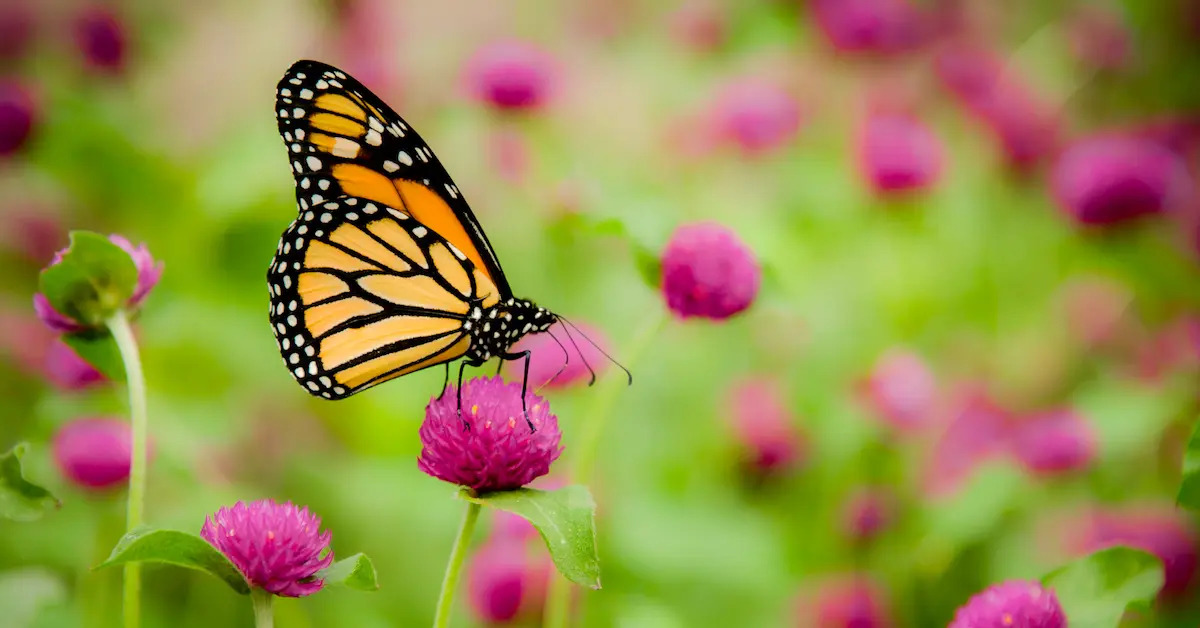Home>Gardening News and Trends>Latest News>What Attracts Insects To Flowers
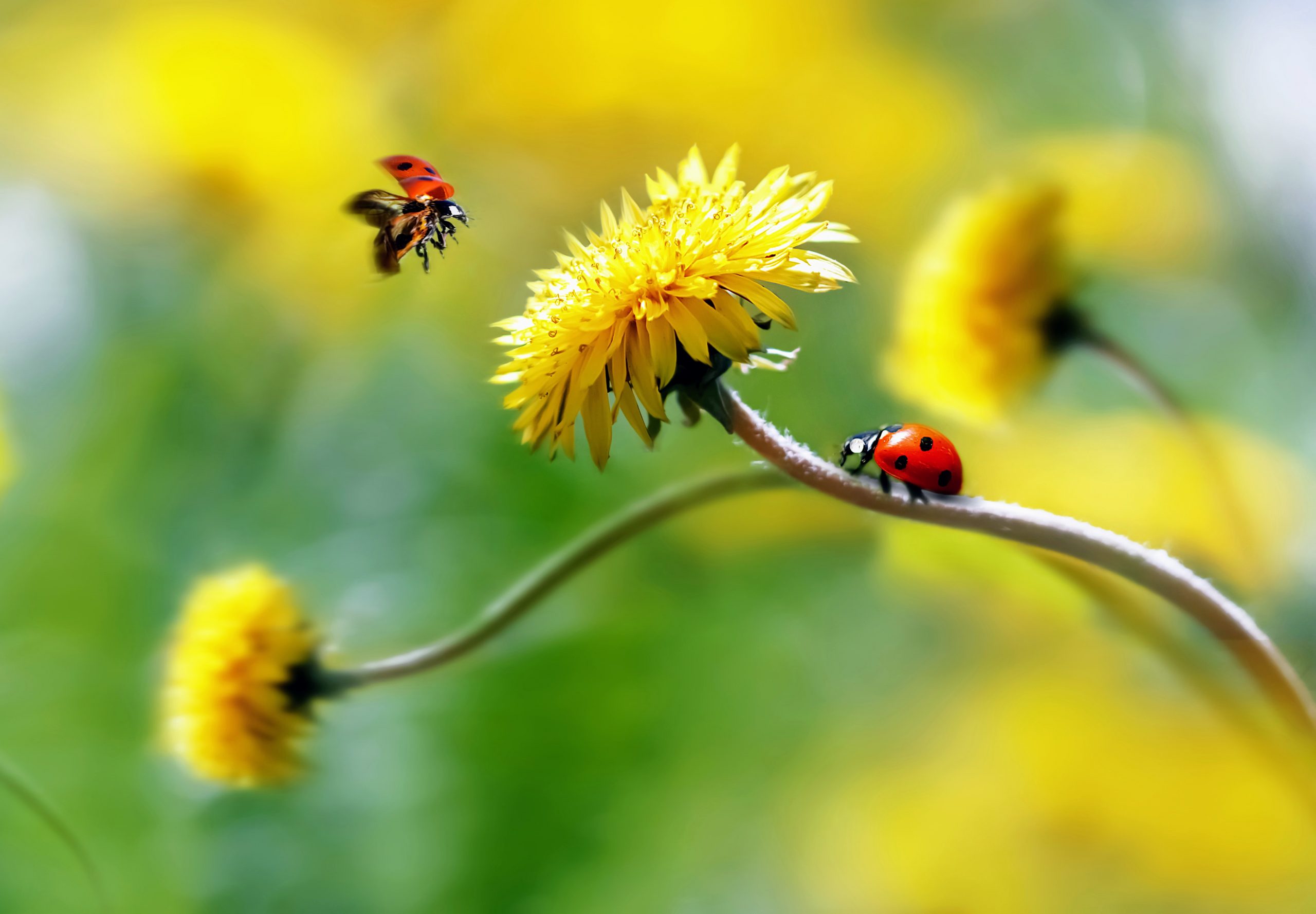

Latest News
What Attracts Insects To Flowers
Modified: January 22, 2024
Discover the latest news on what attracts insects to flowers. Explore the fascinating relationship between insects and flowers and how they coexist and benefit from each other.
(Many of the links in this article redirect to a specific reviewed product. Your purchase of these products through affiliate links helps to generate commission for Chicagolandgardening.com, at no extra cost. Learn more)
Table of Contents
Introduction
Flowers are not only beautiful to humans, but they also possess a mesmerizing allure for insects. Bees, butterflies, flies, and other insects are often seen hovering around flowers, drawn in by their vibrant colors and enticing scents. But what exactly is it that attracts these tiny creatures to flowers?
In the natural world, flowers and insects have a mutually beneficial relationship. While insects are attracted to flowers for various reasons, they inadvertently play a crucial role in pollination, aiding in the reproduction of the flowers themselves. Understanding the factors that attract insects to flowers can shed light on this fascinating interaction between flora and fauna.
In this article, we will explore the intriguing aspects of flower attraction and uncover the mechanisms that make flowers irresistible to insects. From the vibrant colors and patterns to the tantalizing scents and the abundance of nectar and pollen, each aspect of flower appeal plays a unique role in attracting insects. Additionally, we will delve into lesser-known factors such as UV reflectance, flower shape, warmth and temperature, and even electric fields – all of which contribute to the grand spectacle of insect-flower interaction.
By gaining insights into the intricate web of flower attraction, we can appreciate nature’s ingenious design and the vital role that insects play in the ecosystem. So, let’s embark on a journey into the mesmerizing world of flowers and discover what truly captivates our buzzing companions.
Insect Vision and Perception
To understand why insects are attracted to flowers, we must first delve into their unique visual capabilities. Insects perceive the world differently from humans, as they have different visual systems and are sensitive to a broader spectrum of colors. Many insects, such as bees and butterflies, can see ultraviolet (UV) light, which is invisible to us.
Flowers have evolved to take advantage of this insect visual perception. They often have patterns or markings that are only visible under UV light, acting as a sort of runway to guide the insects towards the nectar-rich center of the flower. These patterns can resemble glowing landing pads or arrows, directing the insects to the precise location for pollination.
Furthermore, colors play a significant role in attracting insects. Flowers have evolved to display a wide range of vibrant colors, particularly in the UV spectrum, which is highly attractive to insects. For example, many flowers appear differently to insects than they do to humans. What appears as a single color to us may in fact have intricate patterns and markings that act as visual cues for insects, guiding them towards the flower’s nectar.
Additionally, insects are attracted to contrasting colors and patterns. Flowers that have a stark contrast between their petals and their center, or between different parts of their structure, are more likely to attract insects. This contrast helps insects distinguish the flower from its surroundings and makes the flower more visually appealing.
Insect vision and perception are vital factors in the attraction between flowers and insects. The ability of flowers to exploit the insect visual system by displaying patterns and colors that are invisible to humans is a captivating aspect of nature’s design. By understanding how insects perceive the world, we can better comprehend the intricate relationship between flowers and their insect visitors.
Colors and Patterns
Colors and patterns play a crucial role in attracting insects to flowers. Flowers have evolved to showcase a dazzling array of colors, from vibrant reds and blues to delicate pinks and purples. These colors serve as visual signals and advertisements to potential insect pollinators.
Certain colors are particularly attractive to different types of insects. For instance, bees are highly responsive to bright colors like yellow and blue, while butterflies are drawn to a broader range of colors, including purples and oranges. By using specific colors that align with the preferences of different insect species, flowers increase the likelihood of attracting the most effective pollinators.
In addition to color, the patterns displayed by flowers also contribute to their allure. Flowers often have distinct patterns, stripes, or spots on their petals, which can act as visual guides for insects navigating towards the nectar-rich center. These patterns provide a visual cue, enabling insects to locate the most valuable food source efficiently.
Furthermore, flowers may exhibit “nectar guides,” which are patterns or lines that guide insects towards the nectar-producing parts of the flower. These guides are often more visible under UV light, making them highly effective in attracting insects that can perceive this spectrum. Nectar guides serve as a visual invitation and a reward system for visiting insects, ensuring a successful pollination process.
The interplay of colors and patterns in flowers showcases the ingenuity of nature. Flowers have evolved to use specific hues and intricate designs to capture the attention of potential pollinators. By understanding the preferences of different insect species and adapting their colors and patterns accordingly, flowers maximize their chances of attracting the right pollinators and ensuring successful reproduction.
Fragrance and Scent
In addition to visual cues, fragrances and scents play a significant role in attracting insects to flowers. Flowers produce a wide range of aromas, from sweet and floral to musky and spicy, which act as chemical signals to insects, guiding them towards the flower.
The production of these scents is often concentrated in the flower’s nectar-producing structures, such as the petals or the stamen. Insects, particularly bees and butterflies, have a highly developed sense of smell and can detect these floral scents from a considerable distance.
Different flowers produce distinct fragrances, which not only attract pollinators but also help in species recognition within a densely populated floral ecosystem. This ensures that each flower species can successfully attract its specific pollinators, preventing interspecies competition for pollination services.
Furthermore, the intensity of the scent can vary throughout the day. Many flowers release their strongest fragrances during certain times, such as the early morning or late evening, aligning with the foraging behaviors of their target pollinators. This time-specific release increases the chances of attracting insects when they are most active and searching for food.
It is important to note that the sense of smell is not limited to just the floral scents. Some flowers produce specific odors that mimic the pheromones of female insects, effectively attracting male insects seeking mates. This strategy allows flowers to hijack the reproductive instincts of male insects and benefit from their unwitting pollination services.
The delightful fragrances emitted by flowers are nature’s way of enticing insects to visit and pollinate them. By producing an enticing scent, flowers can ensure a steady stream of pollinators, facilitating successful reproduction and the continuation of their species.
Nectar and Pollen
One of the primary attractions for insects visiting flowers is the presence of nectar and pollen. Nectar is a sugary liquid produced by flowers and is a vital source of energy for many insects, particularly bees, butterflies, and hummingbirds. Pollen, on the other hand, is a powdery substance produced by the male parts of flowers, containing the plant’s reproductive cells.
Flowers have evolved various mechanisms to entice insects with the promise of abundant nectar. The nectar glands or “nectaries” are often strategically located deep within the flower’s structure, requiring insects to make contact with the reproductive organs and facilitating effective pollen transfer. This symbiotic relationship benefits both the flower and the insect, as the insect receives a nutritious reward while unknowingly assisting in the flower’s reproduction.
The quality and quantity of nectar and pollen can vary among different flower species. Some flowers provide large amounts of nectar, attracting a wide range of insects, while others may produce small amounts but have a more concentrated sugar content, thus selectively engaging specific insect pollinators. This specialization ensures a successful pollination process by attracting the most efficient pollinators for each flower species.
Moreover, the timing of nectar and pollen production is crucial. Flowers often regulate their nectar flow to coincide with the peak activity of their target pollinators. For example, certain flowers may produce the highest amounts of nectar during the daytime when pollinators like bees are most active. This synchronization maximizes the chances of successful pollination by attracting insects precisely when they are seeking food resources.
In addition to providing nourishment, pollen plays a vital role in flower reproduction. Bees and other insects inadvertently transfer pollen grains from the male parts of one flower to the female parts of another flower, facilitating cross-pollination. This crucial process ensures genetic diversity and the production of viable seeds for the next generation of plants.
The enticing offer of nectar and the accidental transfer of pollen make flowers an irresistible destination for hungry insects. The mutualistic relationship between flowers and insects revolves around these essential resources, ensuring the continuation of both flowering plant species and the diverse insect populations that rely on them.
UV Reflectance
One fascinating aspect of flower attraction is their ability to reflect ultraviolet (UV) light. While humans cannot see UV light, many insects have specialized vision that allows them to perceive this spectrum. Flowers have evolved to take advantage of this by reflecting UV light in unique patterns and colors, increasing their visibility and attractiveness to insects.
The UV reflectance of flowers serves multiple purposes in attracting insects. First, it helps insects distinguish flowers from their surroundings. Since most plants and other objects do not reflect UV light, the vibrant UV patterns on flowers act as beacons, guiding insects towards the flower’s nectar-rich center.
Secondly, UV reflectance aids insects in identifying the most rewarding flowers. Flowers with stronger UV reflectance are often associated with higher nectar levels or better quality pollen, making them more appealing to pollinators. This provides a clear visual cue for insects, allowing them to efficiently navigate to the most valuable food sources.
Additionally, some flowers use their UV patterns as landing pads to facilitate insect landing and access to nectar. The combination of visually enticing colors and captivating UV patterns guides insects towards the exact position where they can effectively engage in pollination.
It’s worth noting that the UV reflectance of flowers can vary between species. Each flower has its unique UV pattern, which serves to attract specific pollinators. This specialization ensures that the right insect species is drawn to the corresponding flower, promoting successful pollination and reducing competition for resources.
The ability of flowers to reflect UV light showcases the intricate and sophisticated adaptations they have undergone to interact with their insect pollinators. By utilizing UV reflectance, flowers provide a visually striking and highly effective means of attracting insects and facilitating the mutualistic relationship between flora and fauna.
Flower Shape and Structure
The shape and structure of flowers play a crucial role in enticing insects to visit and interact with them. Flowers have evolved a wide variety of shapes and structures, each adapted to attract specific pollinators and ensure successful pollination.
One significant factor in flower attraction is the accessibility of the nectar and pollen. Different insects have different feeding apparatus, such as bees with their long proboscis or butterflies with their sponging mouthparts. Flowers have adapted to accommodate these specific feeding mechanisms by developing specific shapes and structures.
Some flowers have long, tubular shapes, extending their nectar-containing structures deep within the flower. This design is particularly attractive to insects with long proboscis, such as hummingbirds and certain moth species. The elongated shape ensures that the proboscis reaches the nectar, encouraging repeated visits and effective pollination.
Other flowers have shallow or open structures that make it easier for insects with shorter mouthparts, like bees and butterflies, to access nectar. These flowers often have a wide landing platform and easily accessible nectar-producing parts, ensuring efficient feeding and effective pollen transfer.
The structure of the flower can also assist in pollen distribution. Some flowers have specialized structures, such as stamens or anthers, that allow them to release pollen in a particular way. For instance, buzz pollinated flowers like tomatoes and blueberries have anthers that vibrate to dislodge pollen when bees create vibrations by buzzing their wings. This unique mechanism encourages bees to visit these flowers and, unintentionally, collect and distribute pollen as they shake the anthers.
The color and pattern of the flower can also be influenced by its shape and structure. Some flowers have developed unique shapes, such as “landing pads” or “runways,” combined with vivid color patterns, directing insects towards the flower’s center. This combination of shape and color enhances the visibility and attractiveness of the flower to specific pollinators.
Flower shape and structure have coevolved with the feeding apparatus of various pollinators, resulting in an intricate network of mutualistic relationships. The diverse array of shapes, sizes, and structures observed in flowers demonstrates nature’s ingenuity in adapting to the preferences and needs of different pollinators, ensuring successful pollination and the perpetuation of both flower species and their insect companions.
Warmth and Temperature
Flowers not only captivate insects with their colors, patterns, and scents but also entice them with their warmth. The temperature of flowers can play a significant role in attracting insects and influencing their behavior.
Many flowers have the remarkable ability to regulate their temperature, which is known as thermogenesis. They generate heat through various processes, such as cellular respiration or specialized tissues, to maintain a slightly elevated temperature compared to their surroundings. This warmth can be highly attractive to insects, especially in cooler climates or during early mornings and evenings.
The elevated temperature of flowers serves multiple purposes. First, it creates a comfortable environment for insects, particularly those that may rely on external sources of heat to maintain their body temperature, such as bees or moths. By providing a warm refuge, flowers increase the likelihood of insect visits and extend the duration of their feeding and pollination activity.
Moreover, the warmth of flowers can influence the behavior of insects, specifically regulating their metabolic rate and foraging efficiency. Insects are ectothermic organisms, meaning their body temperature is dependent on the surrounding environment. When they encounter warm flowers, their metabolic rate increases, enabling them to gather more nectar and carry out more efficient pollination.
The warm temperature of flowers can also make them more visually attractive to insects. In cooler environments, flowers with slightly higher temperatures can stand out and act as a thermal beacon amidst the surrounding vegetation. Insects are naturally drawn to these warm spots, recognizing them as potential sources of energy and food.
It’s important to note that the warmth of flowers can vary depending on factors such as climate, time of day, and the flower’s stage of development. Some flowers may have a constant or intermittent heat production, while others may only generate heat for a shorter period during their blooming stage.
The intriguing aspect of flower warmth adds another dimension to their attractiveness to insects. The ability of flowers to provide a comfortable and thermally inviting environment for their insect visitors showcases the intricacies of their adaptations and highlights the importance of temperature in the pollination process.
Electric Fields
In addition to visual cues, scents, and warmth, flowers utilize another fascinating mechanism to attract insects – electric fields. Recent research has uncovered that some flowers generate weak electric fields, which can serve as a form of communication and signaling to potential insect visitors.
Flowers build up electric charges through various processes, such as transpiration, a process by which water evaporates from the leaves. This charge imbalance creates an electric field around the flower, which can be detected by insects. It has been observed that certain insects, like bees, can sense and respond to these electric fields.
These electric fields can provide valuable information to insects about the flower’s condition and readiness for pollination. For example, studies have shown that flowers in need of pollination tend to have a more negative charge, while recently visited flowers have a more positive charge. This electric signaling can help guide insects towards flowers that are more likely to provide rewards, such as nectar.
Moreover, the presence of electric fields can aid insects in their approach and landing on flowers. As insects fly near a flower, the electric field between the flower and the insect causes small, localized distortions in the electric field. Insects are believed to use these distortions as an additional sensory cue, helping them navigate and position themselves for landing on the flower.
Interestingly, some research suggests that certain flowers can actively adjust their electric fields in response to insect visits. This dynamic adjustment may help to optimize the attractiveness of the flower to insects, ensuring that the most effective pollinators are encouraged to visit.
The discovery of electric fields in flowers highlights yet another captivating aspect of plant-insect interactions. The ability of flowers to generate and utilize electric fields as a means of communication and attraction showcases the sophistication of their adaptations. By tapping into electric fields, flowers engage in a subtle and refined dialogue with their insect visitors, ensuring the successful transfer of pollen and promoting their reproductive success.
Conclusion
Flowers have mesmerized us with their beauty and scents for centuries, but their allure extends far beyond our human perception. They possess a remarkable ability to attract insects through a combination of visual cues, fragrances, nectar, warmth, electric fields, and more. Each of these factors plays a vital role in the intricate dance between flowers and their pollinators, ensuring successful reproduction and the perpetuation of both plant and insect species.
By harnessing vibrant colors, intricate patterns, and UV reflectance, flowers create eye-catching displays that captivate the unique visual perception of insects. The fragrance and scent emitted by flowers act as chemical signals, guiding insects towards the promise of nectar-rich rewards. The production of nectar and pollen not only sustains the insects but also facilitates the transfer of vital genetic material for plant reproduction.
The warmth of flowers provides a comfortable refuge for insects, while also influencing their metabolic rate and foraging efficiency. Electric fields, a more recently discovered mechanism, add another layer of communication and navigation for both flowers and their insect visitors. These various strategies, combined with specialized shapes and structures, create a diverse range of floral adaptations that cater to the preferences and needs of different pollinators.
In turn, insects play a vital role in the ecosystem as they unknowingly perform the crucial task of pollination while seeking out resources from flowers. This mutualistic relationship between flowers and insects highlights the delicate balance and interdependence that exists in the natural world.
Understanding the intricate mechanisms that attract insects to flowers not only deepens our appreciation for the wonders of nature but also emphasizes the importance of conserving biodiversity. By preserving diverse flower and insect populations, we can ensure the continued existence of these beautiful interactions and the essential ecosystem services they provide.
Next time you find yourself captivated by the sight and scent of a flower, take a moment to reflect on the hidden world of attraction that exists between the petals. Marvel at the colors, patterns, fragrances, warmth, and electric fields that entice insects to visit and participate in the pollination process. It is a testament to the remarkable adaptations and symbiotic relationships that weaves the intricate tapestry of life on Earth.

